Solar Electric Cells Have A Surprising Benefit: Cooling
by: fast company, 2011-07-19 21:57:59 UTC
Solar panels give you clean energy, yes, but it turns out that's not all. Just by putting them on the roof, you'll start saving cash on your cooling and heating bills.

Installing photovoltaic solar cells is a great way to easily tap into an environmentally sustainable energy source, and in sunnier parts of the world it's even feasible to use them to actually make money by selling power back to the grid as part of a smart grid installation. But according to new research by the University of California at San Diego, there's a massive payoff just by having the things on your roof: They act to insulate your home from heat, and actually lower your air-conditioning bills.
The research team from the engineering department used thermal imaging cameras to look at the heat radiation signature from building roofs and structures on top of them. The result was simple, but starkly interesting: Beneath a solar panel, a building's ceiling structure was 5 degrees Fahrenheit cooler than under a section of roof that was exposed directly to the sun.
This lowers cooling costs in the building during the daytime, resulting in a roughly 5% discount on the solar panel's price over their lifetime. The environmental payoff is also interesting, because the cooling effect means the solar PV panels are, in effect, selling 5% more electricity back to the grid than they're actually producing by converting sunlight.
One building studied had a 38% reduction in the amount of solar heat hitting the building roof--indicating that they're even greater savings than 5% possible, because bigger panels provide more shading effect, and angled ones that have an air pocket trapped beneath them are the most efficient. Interestingly enough, the benefits even continue to the nighttime, where the solar panels act to actually boost roof insulation, and prevent precious heat escaping.
There is a downside, of course. In winter, the panels prevent warming solar energy heating the building--but the San Diego team thinks this is canceled by the fact that the panels also keep heat in at night. They're busy honing a mathematical model that may help homeowners work out the full payoff of installing different solar PV panel configurations. And more useful than this, perhaps, is that in an era of multi-billion-dollar experiments, this case proves that simple straight-thinking science can still turn up valuable data.
[Image: Flickr user steevithak]
Chat about this news with Kit Eaton on Twitter and Fast Company too.


 design 2050: beyond disasters, through solidarity, towards sustainability at UIA 2011 tokyo
design 2050: beyond disasters, through solidarity, towards sustainability at UIA 2011 tokyo
by: Designboom - Weblog, 2011-07-18 07:17:00 UTC

questioning the role and responsibilities of architects, engineers, and designers, this year's symposium seeks to investigate the creation of sustainable societies, attractive cities and the protection of human lifestyles.
read more
Inflatable Furnishings
by: Yanko Design, 2011-07-19 07:01:18 UTC
The Bojaki collection of inflatable, foldable, flat-pack housewares & furniture aims to integrate the user into the manufacturing process, strengthening the user’s bond to the piece while easing on transportation & production costs. Though the fabric looks soft & squishy, it is very rigid making it sturdy enough to hang or hold the weight of a sitting person. Consistent use of buckles, strings, & eyelets to bind the unique fabric ensure aesthetic continuity though shapes & purposes vary from piece to piece.
Designer: Jy-Yeon Suh
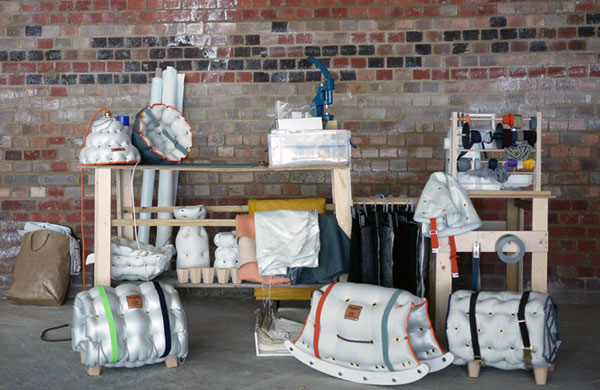
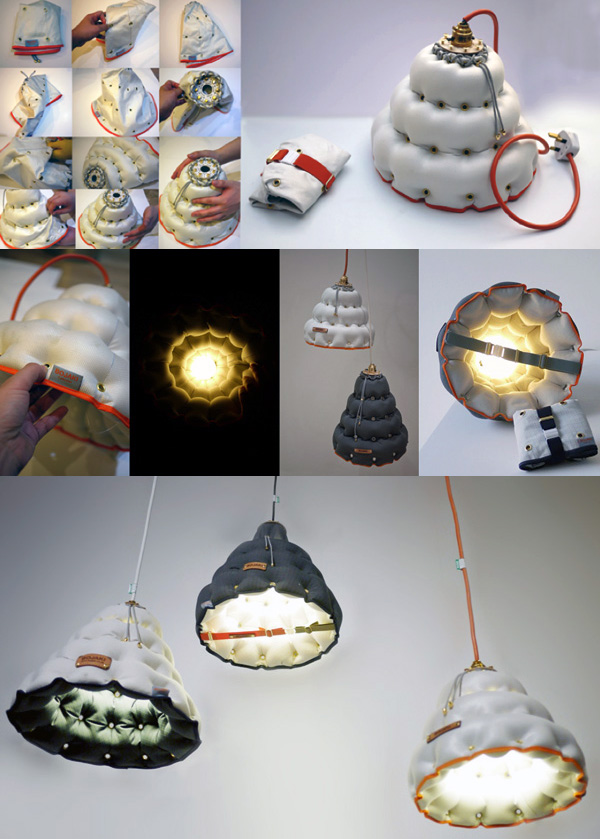
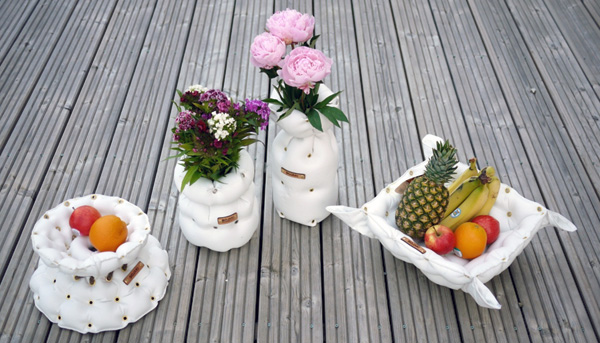
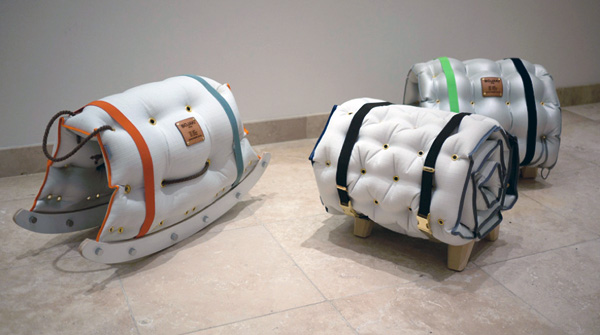
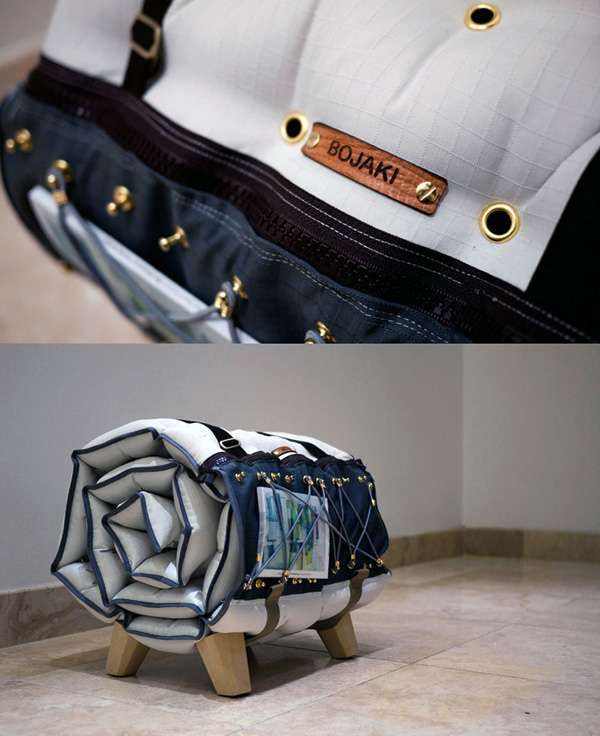
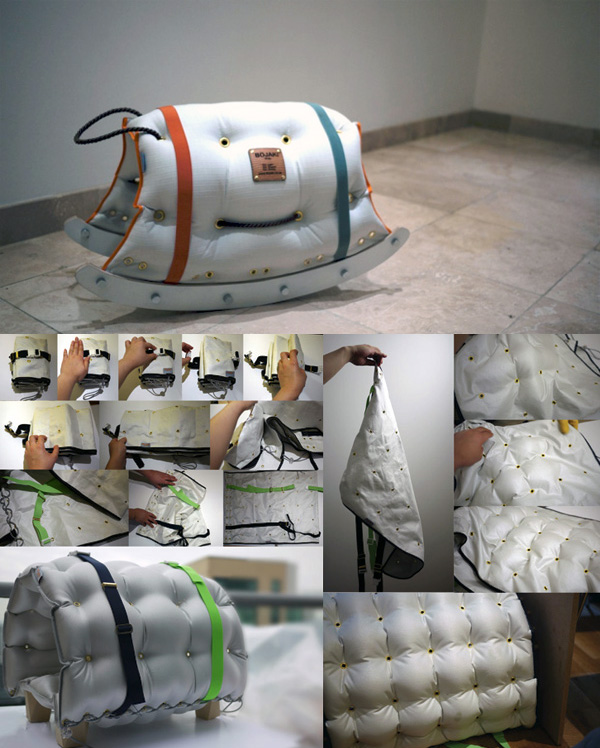
----------
Yanko Design
Timeless Designs - Explore wonderful concepts from around the world!
Yanko Design Store - We are about more than just concepts. See what's hot at the YD Store!
Get More Out Of Your Toothpaste Tube
by: Yanko Design, 2011-07-15 08:18:12 UTC
Here is another intriguing Toothpaste Packaging design that makes total sense. SavePaste has a three-point agenda: To eliminate the hard-to-squeeze dead space, minimizing toothpaste residue left inside the container; Reduce two packaging to one. It means we can reduce waste and manufacturing price plus encourage recycling. And finally, have a user-friendly design so that people easily adopt it. I think it’s a full score on all three fronts!
Designers: Sang Min Yu and Wong Sang Lee
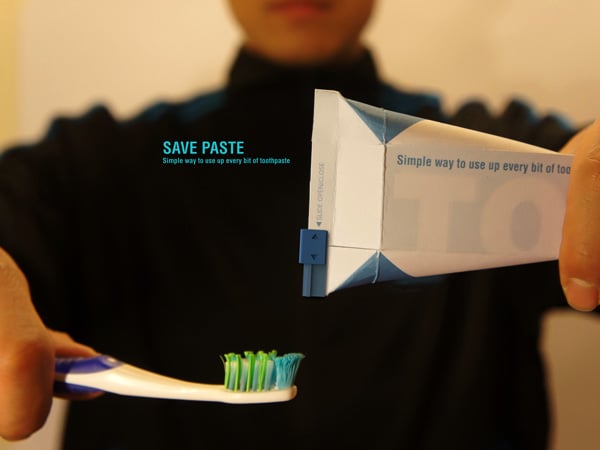
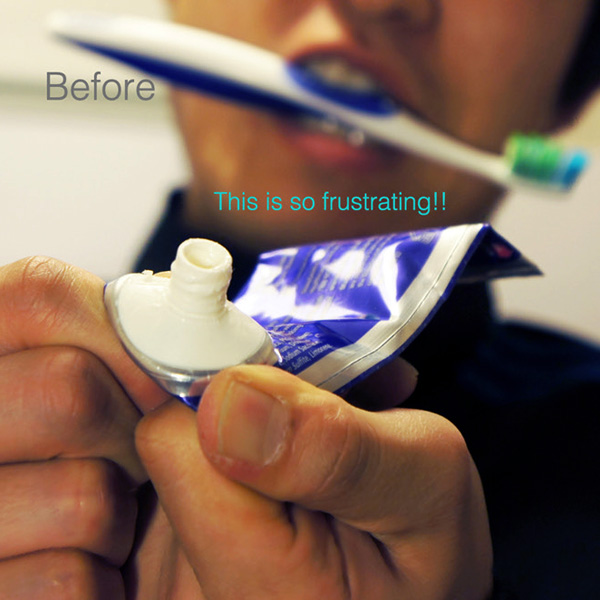
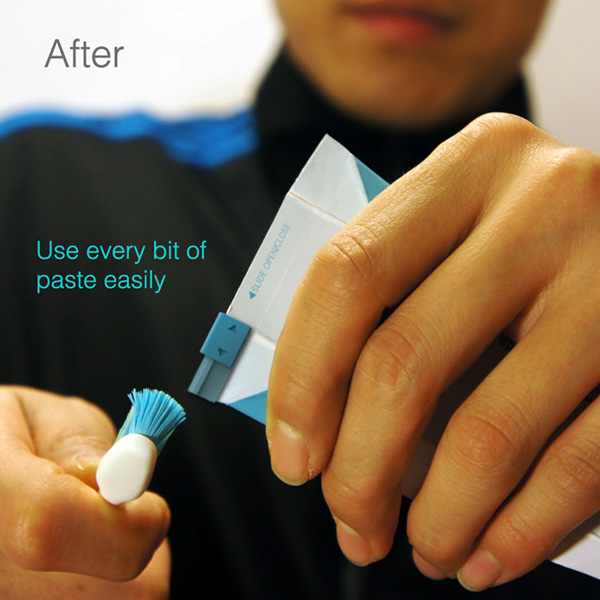
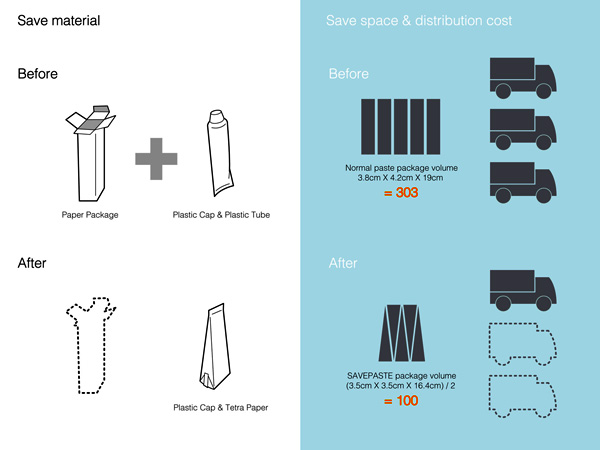
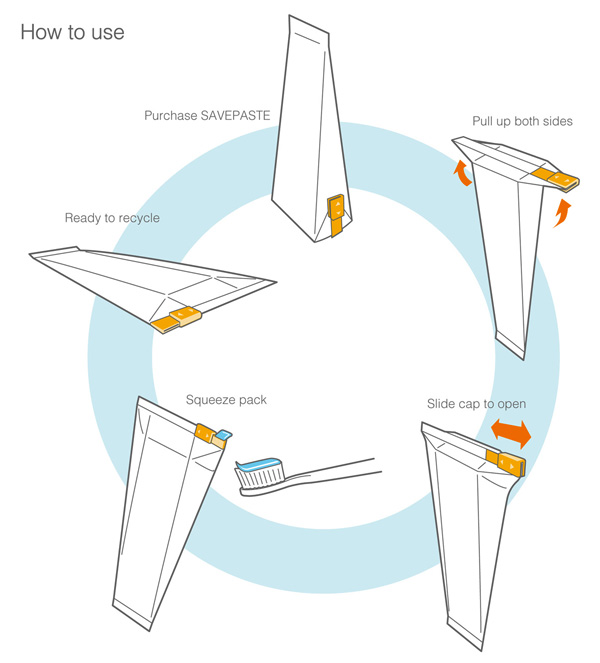
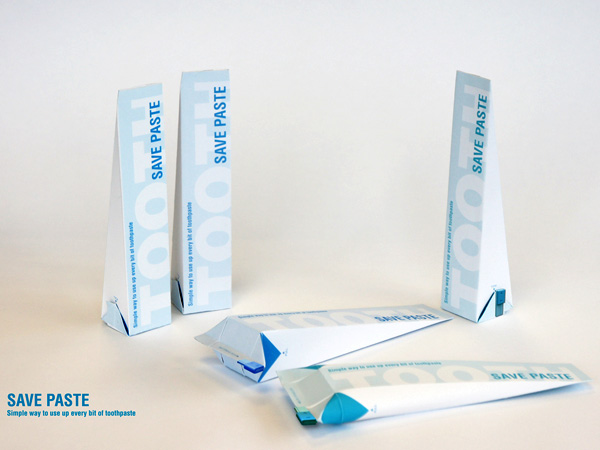
----------
Yanko Design
Timeless Designs - Explore wonderful concepts from around the world!
Yanko Design Store - We are about more than just concepts. See what's hot at the YD Store!
Solar Gazebo: Landscaping element embellished with decorative glassware
by: Ecofriend, 2011-07-15 11:43:13 UTC
DATTATREYA MANDAL:

Solar GazeboDesigned by Ceri Almrott
Sustainable conceptions (including products) generally tend to have that nature of essentiality associated with them, like basic electricity generation or low emission modes of transport. But with that definite line of economic progression, some sections of this green technology oriented market are already starting to make serious inroads into the domain of comfort and luxury products. The Solar Gazebo conceptualized by Ceri Almrott falls in this latter category, and it will be a solar powered arbor (pergola) flanked by decorative glass elements.

Solar GazeboDesigned by Ceri Almrott
An arbor is basically a landscaping feature (especially situated in a garden) in which a definite seating area is skirted by vertical members (like posts or panels), which in turn supports a flexible roofing system. The Solar Gazebo will be a sort of glass arbor, where ‘clean and green’ solar power will be utilized to illuminate the surrounding decorative glass. The dynamic effect will result in a vivacious play of light, color and transparency, and thus bestow an essence of sublimity to the entire spatial volume.

Solar GazeboDesigned by Ceri Almrott
The whole conception is based on the recent constructional trend of glassware applications in the field of architecture. In this case, the main component i.e. the unique glass facades will be supplied by Creative Glass LTD - a company know for its custom made decorative glassware. The arbor is to be built in Stockton-on-Tees, a market town of North-East England. And according to the prevailing pricing strategy of Creative Glass products, the designer has made an estimate of cost regarding his conception at a range of £9,000 (or $14,490) for the basic offering, to £20,000 ($32,000) for the top of the line model.
Certainly beyond the ‘range’ of most of our pockets; but then again one can’t simply deny the low energy, sustainable side to this artistic conception of landscaping architecture.
Via: Behance


 Pollee by UiWE
Pollee by UiWE
by: Dezeen, 2011-07-15 13:15:02 UTC
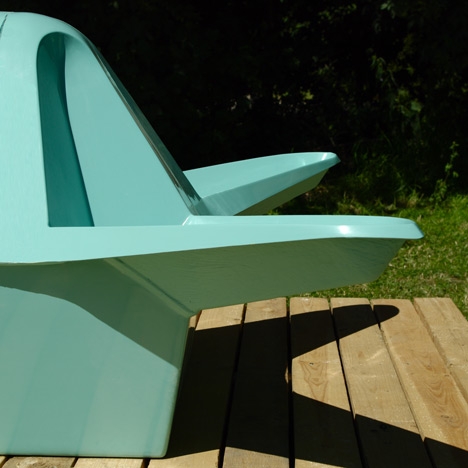
Here’s another update from the cutting edge of toilet design: Copenhagen studio UiWE are working on urinals for women. (more…)


 New Formula for Carpeting Eliminates Latex, Makes It Biodegradable
New Formula for Carpeting Eliminates Latex, Makes It Biodegradable
by: TreeHugger Design, 2011-07-13 18:15:00 UTC
 Photo by the-specious via Flickr CC
Photo by the-specious via Flickr CC
Carpeting may be something we give little thought to, but the ubiquitous floor covering is actually a serious environmental problem. Not only are toxic chemicals often used in the making of most carpeting, they are usually carted off to landfills or incinerated rather than recycled at the end of their useful life. However, researchers at UPC's Terrassa Campus have come up with an eco-friendly solution. ...
Read the full story on TreeHugger
DIY, Flat-Pack, and Awesome
by: Yanko Design, 2011-07-13 07:01:53 UTC
Respect and love this flat-pack, do-it-yourself design! The Mudo table is the result of an effort by designers Patrick Carmody and Kfir Shetrit to create a 3d structure out of flat sheets of material to minimize waste and reduce the overall energy use in the fabrication process. Pieces are cut out of a 1/4″ thick sheet of Masonite with plastic laminate, and because each is the opposing tessellation of its neighbor there is very little material loss in production.
Designers: Patrick Carmody and Kfir Shetrit
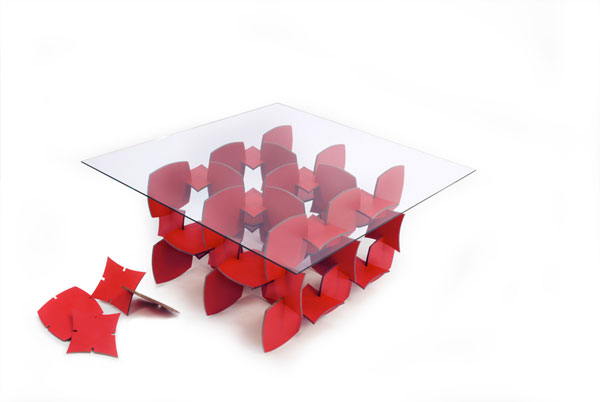





----------
Yanko Design
Timeless Designs - Explore wonderful concepts from around the world!
Yanko Design Store - We are about more than just concepts. See what's hot at the YD Store!
A motion sensing streetlight system that aims to save electricity
by: Ecofriend, 2011-07-13 09:21:50 UTC
Samiran Banerjee:

Energy saving streetlightDelft University of Technology
Taking a smart initiative towards energy saving, The Netherlands’ Delft University of Technology is experimenting with a new street light system on its premises. The system is envisaged to save up to 80 percent electricity, reduce CO2 emission, and also keeps a tab on light pollution. Energy saving has become the cry of the hour. Very often we come across energy saving tips that advice us to not leave lights on while leaving a room.
However, a huge amount of energy is wasted from the street lights, belonging to the various cities all around the globe, as they are kept on all night long, even when the streets are left deserted. In order to minimize this huge loss of resources, Delft University of Technology, Netherlands has come up with a sophisticated street-lightning system which has been infused with the capacity of reducing energy loss and CO2 emission and also giving a check to the widespread light pollution.
The new street-lightning system is intelligently built, with some high-end technologies. There are LED bulbs which provide illumination, after being triggered by motion sensors. When a traveler or a passing vehicle approaches the street light, it is detected by the sensor which triggers the illumination up to 100 percent. Once the commuter passes by, the illumination goes back to 20 percent. It is more like a “Pool of Light” that precedes and follows a person, wherever he goes.
The lights are wireless and they communicate with each other or with the central control room, with the help of a wireless communication system. The central control room is also notified, in case any failure occurs. One of the shortcoming of the system, that is being worked on, is to prevent the lights from being activated by insignificant things like a swaying branches or wandering cats. This Delft University product will be named as Tvilight and will be implemented very soon.
Via: Gizmag


 Sunny Water Lilies to beautify Phuket and generate renewable energy
Sunny Water Lilies to beautify Phuket and generate renewable energy
by: Ecofriend, 2011-07-13 09:32:35 UTC
Ritu Mathur:

Water Lily IslandsDesigned by The Why Factory
Thailand is known for its rich culture and vivacity and every year hundreds of thousands of tourists throng the country for witnessing the colorful tradition and beautiful landscape. Researchers at The Why Factory are planning to build synthetic giant lilies that will add to the beauty of landscape in the city of Phuket. These lilies are not good only for their aesthetic value but also for their utility. These lilies will act as solar panels that will soak the sunlight throughout the day and will transform solar energy into renewable electricity for the city to use. It will be a self sustaining and green way for the city to produce electricity and entertaining tourists at the same time.

Water Lily IslandsDesigned by The Why Factory
The models of these lilies were recently displayed in Berlin at the Aedes am Pfefferberg, a well-known international architect forum, which showcases sustainable designs and promotes emerging architects.

Water Lily IslandsDesigned by The Why Factory
The exhibition where these lilies were displayed was an exhibition around the theme of water - most used and most abused natural resource on Earth and was named as “Water- Curse or Blessing”. The exhibition displayed various innovative architectural designs meant for various regions of Asia that are situated near water bodies. The idea was to promote ecofriendly ways to conserve water as potable and hygienic water is not available to residents of these places despite the omnipresence of water in these regions. These lilies are supposed to surround the beautiful city of Phuket. These flowers will open towards the Sun and the tourists will be able to reach to them via boats and will be able to climb on them and see the beauty of the city.
Via: Inhabitat/Designboom




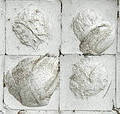

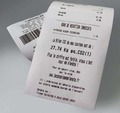
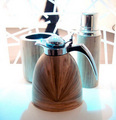
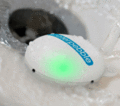
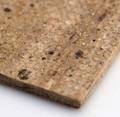
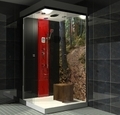
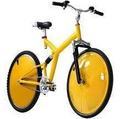
Comments by our Users
Be the first to write a comment for this item.